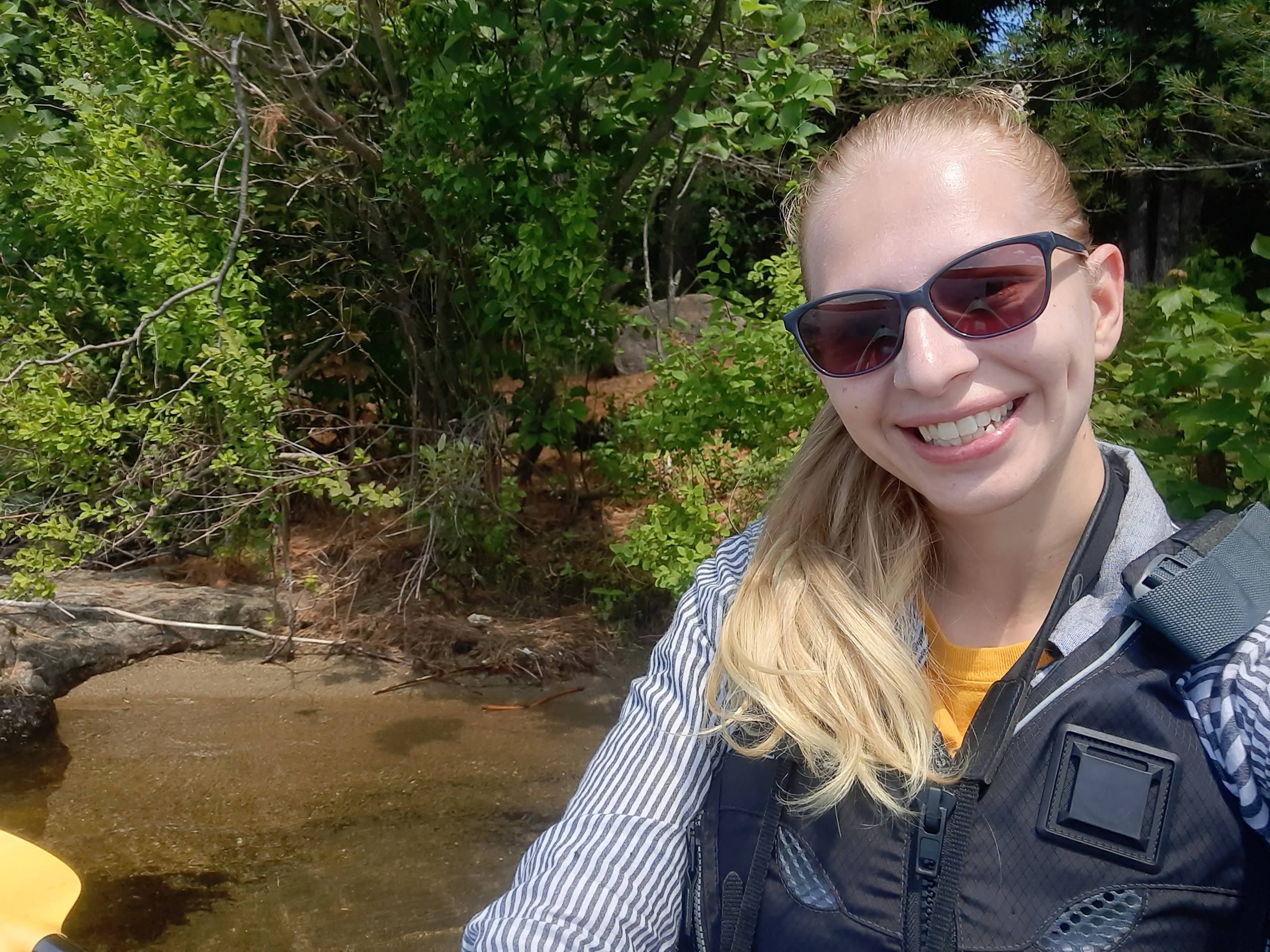Tessa Mountain ’23 is one of 26 student fellows who completed research with a community-based organization in upstate New York this summer as a part of the Upstate Institute Summer Field School.
I spent ten weeks living in the Adirondacks, working for the Adirondack Center for Loon Conservation (ACLC) as a Field School Fellow this summer. Common loons are a water bird of special conservation concern in New York, and they are an indicator species for heavy metals and a flagship species. I was honestly shocked by how many people to whom I talked in the Adirondacks simply loved their loons, whether or not they were connected to conservation efforts. Because they are so specialized for swimming and diving, adult loons cannot walk, so their nests must be directly on the shoreline. However, this exposes their nests to flooding risks, along with avian and mammalian predation.
I worked for the ACLC’s Nest Raft Program to help mitigate these nesting threats. I regularly kayaked on six lakes, observing eight loon pairs for their nesting successes and failures. Out of those eight pairs, only half ever built nests, and half of those nests failed due to flooding. Only two pairs, 25% of my sample, successfully hatched chicks from their nests, one chick per nest. All the data I collected about the nests, such as their locations and results, and the loon behaviors and if they had been banded, were recorded and turned into the ACLC’s database.
This information is crucial for the future of the emerging Nest Raft Program, as the ACLC works to identify what threats are preventing loons from successfully reproducing and which pairs could benefit most from the addition of a nest raft. These rafts, covered to prevent eagle predation, are floating platforms that rise and fall with the water to mitigate flooding risks. Loons often select small islands, where mammalian predation is less prevalent, to build their nests, so hopefully a nest raft (anchored in an area protected from high waves) will provide perfect real estate for them to build their nests in the future.
Both the pairs that did not nest and those that had nests fail could be aided with well-placed rafts, which reduce flooding risk and provide accessible nesting areas for those that did not deem their current environments suitable.
As my first foray into biological field work, this was the opportunity of a lifetime, and that’s to say nothing of the additional chances I had to participate in rescues and banding efforts. I’ve gained invaluable experience doing hands-on conservation, and it’s my dream to continue preserving species that are integral to both the environment and the people who live alongside them.
